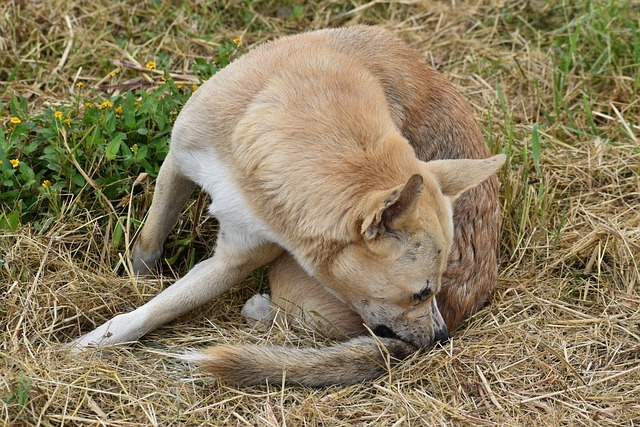Fleas and ticks are more than just annoying pests – they can pose serious health risks to your beloved furry companions. These tiny bloodsuckers can transmit diseases, cause skin irritation, and make your pet miserable. While traditional chemical flea and tick medications are effective, some pet owners prefer a more natural approach.
This comprehensive guide delves into the world of natural flea and tick control, empowering you to keep your pet safe without harsh chemicals. From understanding the lifecycle of these parasites to exploring a variety of natural prevention and treatment methods, you’ll discover safe and effective solutions to protect your pet’s health and well-being.
The Pesky Parasites: Understanding Fleas and Ticks
Before tackling these tiny terrors, let’s get acquainted with the enemy. Here’s a breakdown of fleas and ticks:
Fleas:
These flightless insects are masters at hitchhiking onto pets and burrowing into their fur. They feed on your pet’s blood, causing itchy bites and potentially transmitting tapeworms. The flea life cycle is complex, with eggs laid in your pet’s fur that hatch into larvae, spin cocoons, and emerge as adult fleas, ready to feed and reproduce.
Ticks:
These arachnids (related to spiders) attach themselves to your pet’s skin and feed on their blood. Ticks can produce a variety of diseases, some of which can be serious. Unlike fleas, ticks are visible to the naked eye and don’t jump – they wait on grass, leaves, or other vegetation for a furry host to brush past.
The Natural Approach: Safeguarding Your Pet with Nature’s Bounty
While chemical flea and tick medications are readily available, some pet owners prefer natural alternatives. Here are some effective methods to consider:
Essential Oils:
Certain essential oils, like citronella, cedarwood, and lemongrass, have natural insect repellent properties. However, caution is crucial. Many essential oils are toxic to pets if ingested or used in high concentrations. Never apply essential oils directly to your pet’s skin. Dilute them properly in a carrier oil like coconut oil and use a spray bottle to mist your pet’s bedding or surrounding areas. Always supervise your pet after using essential oils and avoid using them on pregnant, nursing, or young pets.
Diatomaceous Earth (DE):
This naturally occurring powder made from fossilized algae dehydrates fleas and ticks, causing them to die. Food-grade DE is safe for pets when used correctly. Sprinkle a thin layer of DE on carpets, furniture, and pet bedding, making sure to get into crevices where fleas and ticks might hide. Leave it for several days, then vacuum thoroughly. Avoid inhaling DE dust, and keep it away from your pet’s eyes and nose.
Apple Cider Vinegar:
The acidic properties of apple cider vinegar may repel fleas and ticks. Dilute apple cider vinegar with water in a 50/50 ratio and add it to your pet’s water bowl. You can also use the diluted solution as a spray on your pet’s bedding or fur, avoiding their eyes and ears.
Yeast:
Brewer’s yeast, rich in B vitamins, may help repel fleas and ticks by improving your pet’s skin and coat health. Talk to your veterinarian about the appropriate dosage for your pet and add it to their food daily.
Garlic:
While some pet owners swear by garlic for flea and tick control, caution is advised. Garlic can be toxic to pets in large quantities. Consult your veterinarian before using garlic for flea and tick prevention and never give your pet raw garlic.
Natural Bathing and Brushing:
Regular baths with a gentle, natural pet shampoo can help remove fleas and flea eggs from your pet’s fur. Brushing your pet daily not only removes dirt and loose fur but can also help dislodge fleas and ticks before they have a chance to attach. Consider using a flea comb specifically designed to trap these pests.
Environmental Control:
Fleas and ticks thrive in warm, humid environments. Vacuum your carpets and furniture regularly, paying special attention to areas where your pet spends most of their time. Wash your pet’s bedding in hot water weekly and consider using steam cleaning for carpets and upholstery to kill flea eggs and larvae. Mow your lawn regularly and keep your backyard free of debris where ticks might hide.
Dietary Support:
A healthy diet rich in omega-3 fatty acids can contribute to a shiny coat and healthy skin, making your pet less susceptible to flea bites and irritations. Talk to your veterinarian about choosing a high-quality pet food that promotes good skin and coat health.
Important Considerations and When to Seek Professional Help
While natural methods can be effective for flea and tick prevention, it’s important to manage your expectations and understand their limitations. Here are some key considerations:
Especially for severe infestations, natural methods might require more frequent application and diligent environmental control to achieve complete eradication.
Natural solutions may not work for all pets. Some pets may have sensitivities to certain essential oils or other natural ingredients. It’s crucial to test any new product on a small area of your pet’s skin before widespread use.
Natural methods are often preventative rather than curative. If your pet already has a full-blown flea or tick infestation, natural remedies alone might not be enough to eliminate them completely. In such cases, consulting your veterinarian for a prescription-strength medication may be necessary.
Consistency is key. Natural flea and tick control methods often require regular application and environmental maintenance for optimal effectiveness. Be prepared to integrate these practices into your pet care routine.
When to Seek Professional Help
If you notice any of the following signs, it’s time to seek professional help from your veterinarian:
Visible fleas or ticks on your pet.
Excessive scratching, biting, or chewing at their skin.
Hair loss or red, irritated skin.
Signs of lethargy or illness.
Early intervention is crucial to prevent flea bites from becoming infected and to minimize the risk of tick-borne diseases. Your veterinarian can recommend the most effective course of treatment for your pet’s specific situation, potentially combining natural and conventional methods for optimal results.
Living in Harmony with Nature: A Balanced Approach
Natural flea and tick control can be a safe and effective way to keep your pet protected. By understanding the lifecycle of these pests, implementing a combination of natural prevention methods, and maintaining a clean environment, you can create a safe haven for your furry companion. Remember, consistency and a proactive approach are key to success.
Living with pets brings immense joy, and part of being a responsible pet owner is ensuring their health and well-being. Natural flea and tick control offers a gentle approach to keeping your pet safe from these harmful parasites.
However, it’s important to remember that natural methods may not be a one-size-fits-all solution. If you’re concerned about the severity of a flea or tick infestation, or if your pet has any adverse reactions to natural remedies, always consult your veterinarian for guidance and professional treatment.
Additional Tips and Considerations
Indoor vs. Outdoor Pets:
Pets who spend a lot of time outdoors are more at risk of encountering fleas and ticks. They may require more frequent preventative measures compared to indoor pets.
Seasonal Variations:
Fleas and ticks are more prevalent during warm and humid months. Increase your vigilance during these times and consider more frequent preventative measures.
Travel Considerations:
If you travel with your pet, be aware of flea and tick risks in different areas. Talk to your veterinarian about additional preventative measures you might need to take when traveling.
The Importance of Pet Wellness:
Regular veterinary checkups and maintaining a healthy diet for your pet can contribute to a strong immune system, making them less susceptible to flea bites and tick-borne diseases.
By incorporating these natural flea and tick control strategies into your pet care routine, you can create a safe and healthy environment for your furry friend, fostering a lifelong bond built on love and mutual respect.








